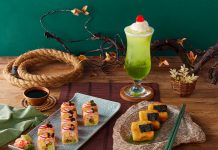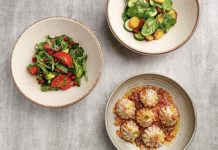Deep Dive: All That You Need to Know About European Rice
Dubai, United Arab Emirates, February 2023
Rice is the third-most cultivated cereal crop globally, after maize and wheat. It is a vital staple food for the world’s population and critically important to many countries. Grain quality is a very important issue regarding the final product. Quality depends not only in the variety of rice, but also on the crop production environment, harvesting, processing and milling systems. Several interrelated features determine the quality of rice, such as moisture content and purity degree. These characteristics are determined by the environmental weather conditions during production, crop production practices, soil conditions harvesting, and post-harvest practices.
As such, it is recommended to opt for European Rice which is cultivated to Greece, that comes with high quality standards. Beginning from the field, producers select the seeds most suited to the soil and climate conditions of the area. Producers of European Rice fully comply with the Integrated Quality Management System for the Agricultural Production of Rice. This System is based on good agricultural practices which respect the environment, protect the producer-grower’s health and offer a healthy and safe product. After harvesting, the product is transferred to the Rice Millers which implement a certified Quality and Food Safety System, for a better control of the quality procedure. High-end quality and genuine taste are the result of European rice that is cultivated to Greece.
European rice is a food with a high nutritional value. It is rich in B-complex vitamins, such as Niacin, Thiamine, Riboflavin and Selenium, while the carbohydrates contained in its endosperm constitute an important source of energy for the human organism.
The European Rice Market is sub-divided in two different segments, namely, INDICA RICE a long grain variety which represents around 25% of EU rice production and JAPONICA RICE, a short and medium grain variety which is the traditional European rice and represents around 75% of EU rice production.
It consists of two main varieties –
-
Camolino Medium Grain Rice, which is a soft, tender and succulent medium sized grain with an oval shape and locks in moisture when cooked. It also has a tendency to cling together and is often used in dishes that require a bit more creaminess.
-
Medium Grain Rice, which is a soft cooking medium-grain rice which has the advantage of being able to carry flavours and colours with high starch content which gives creamy texture.






















